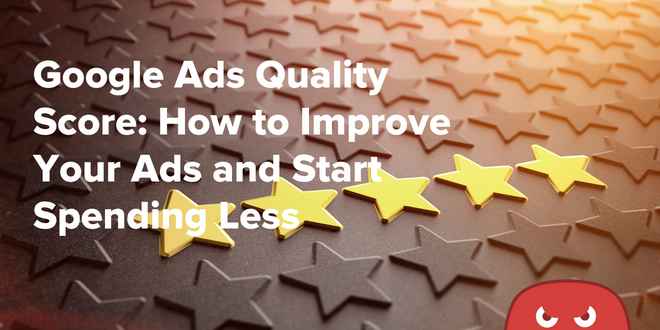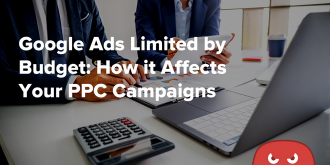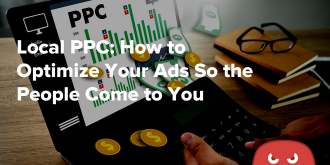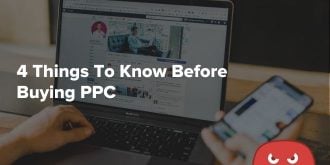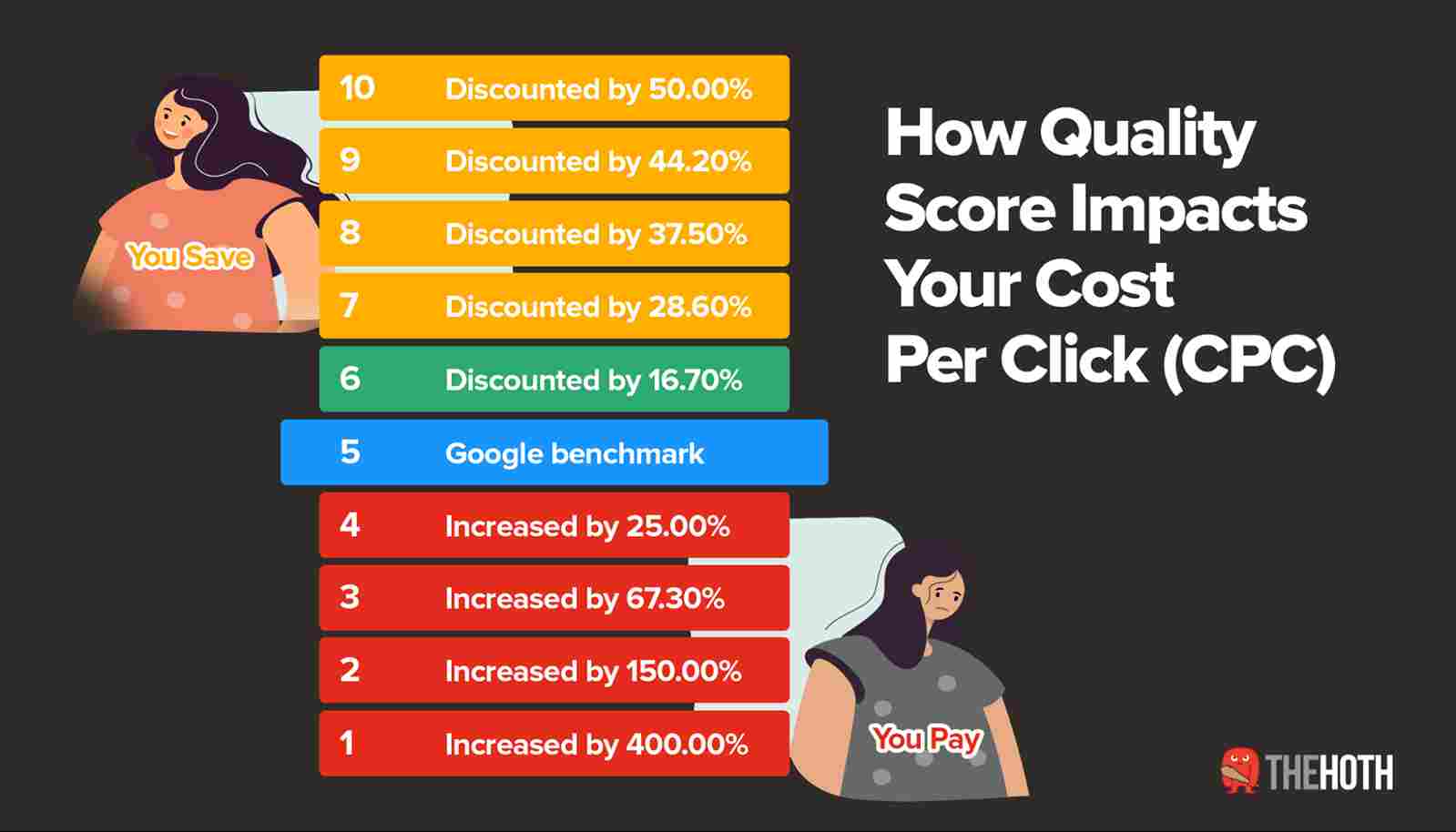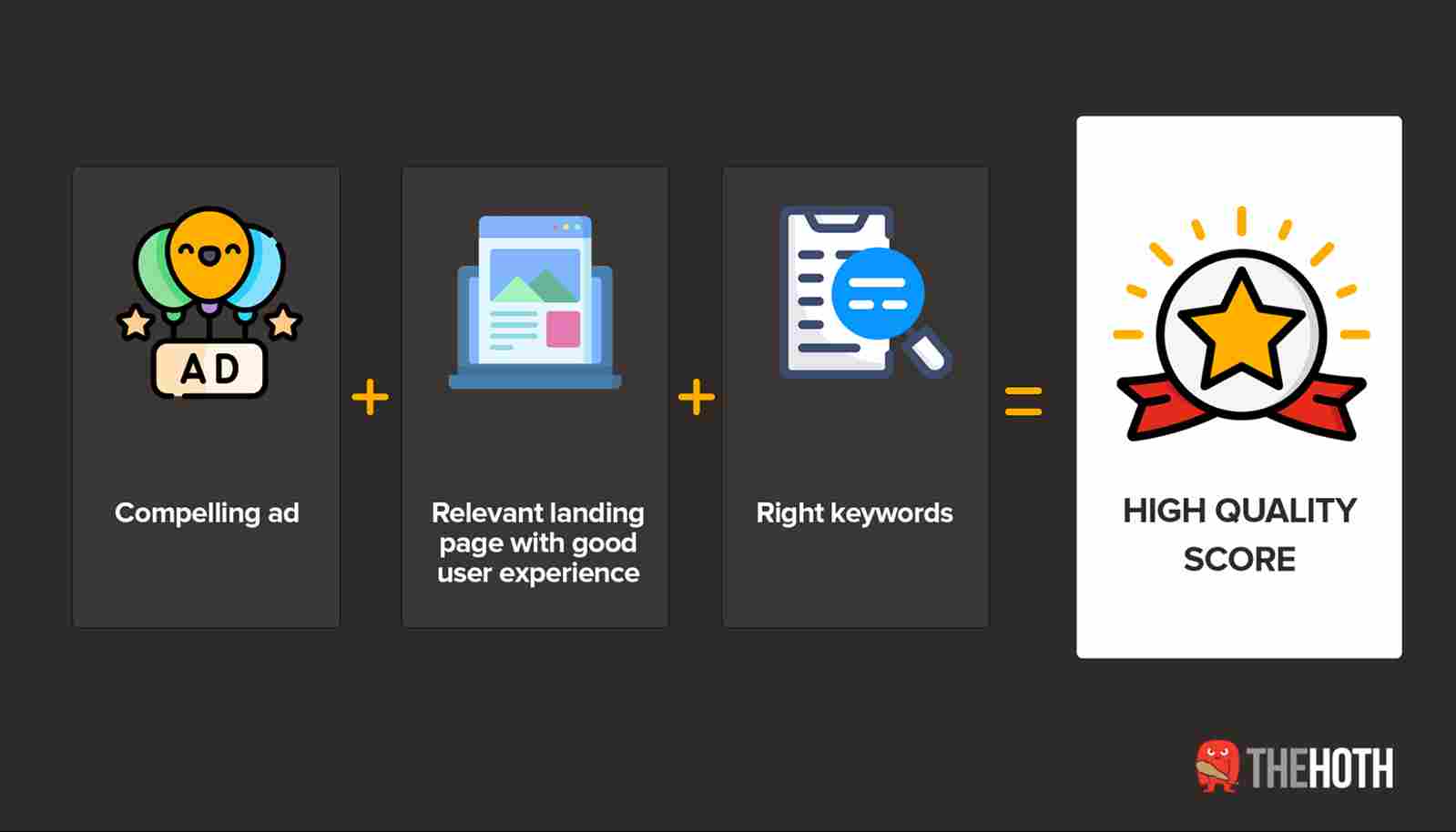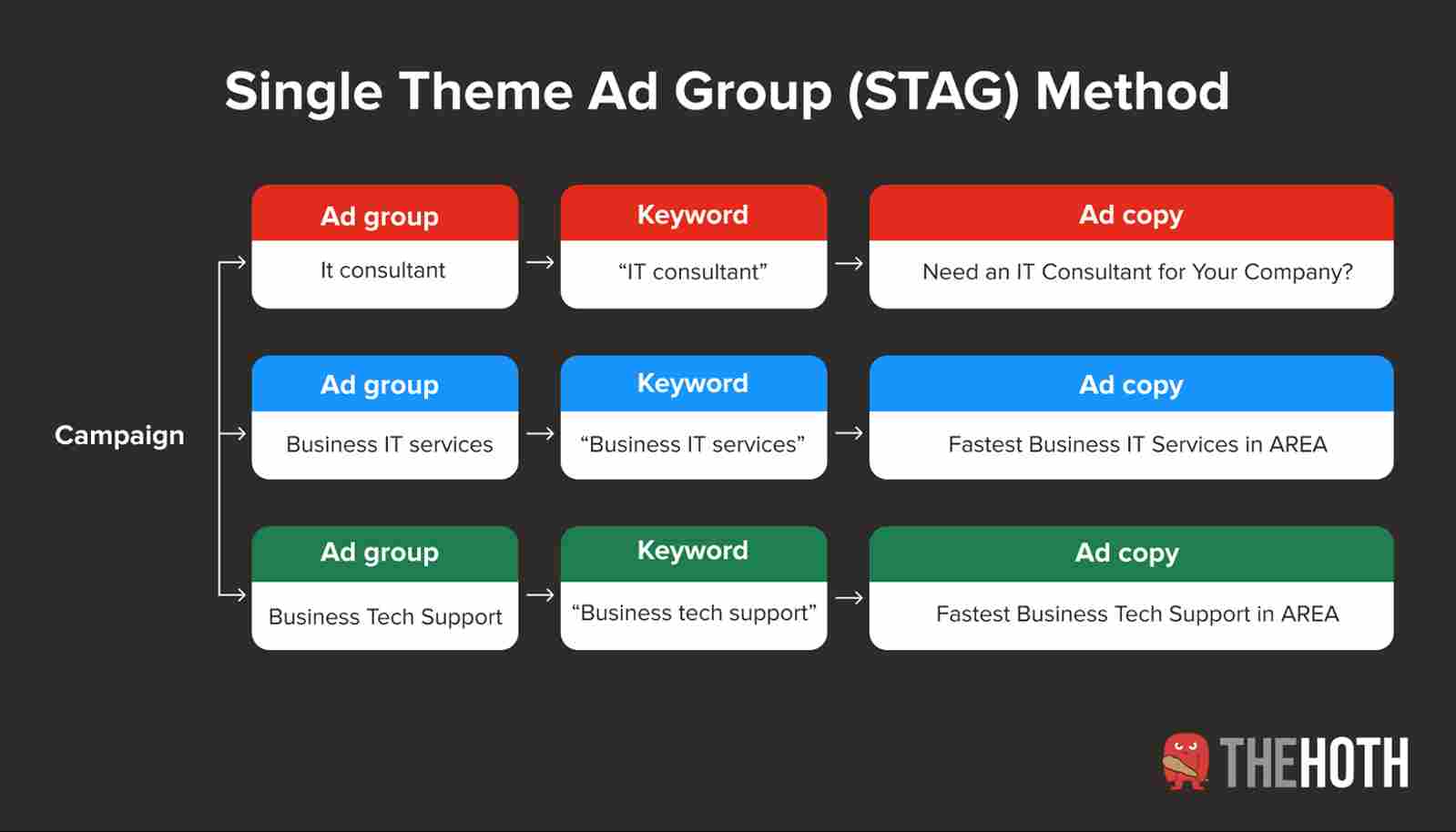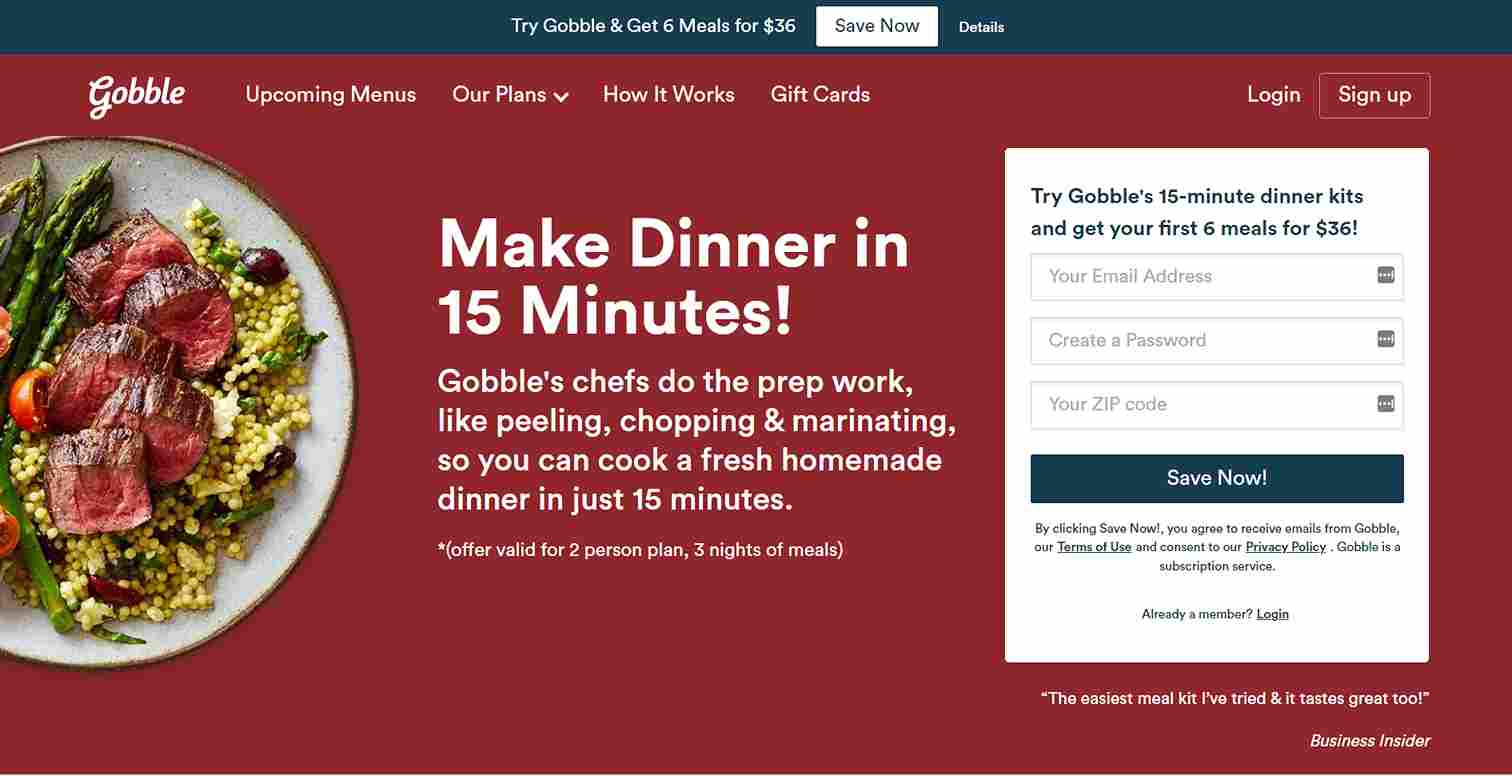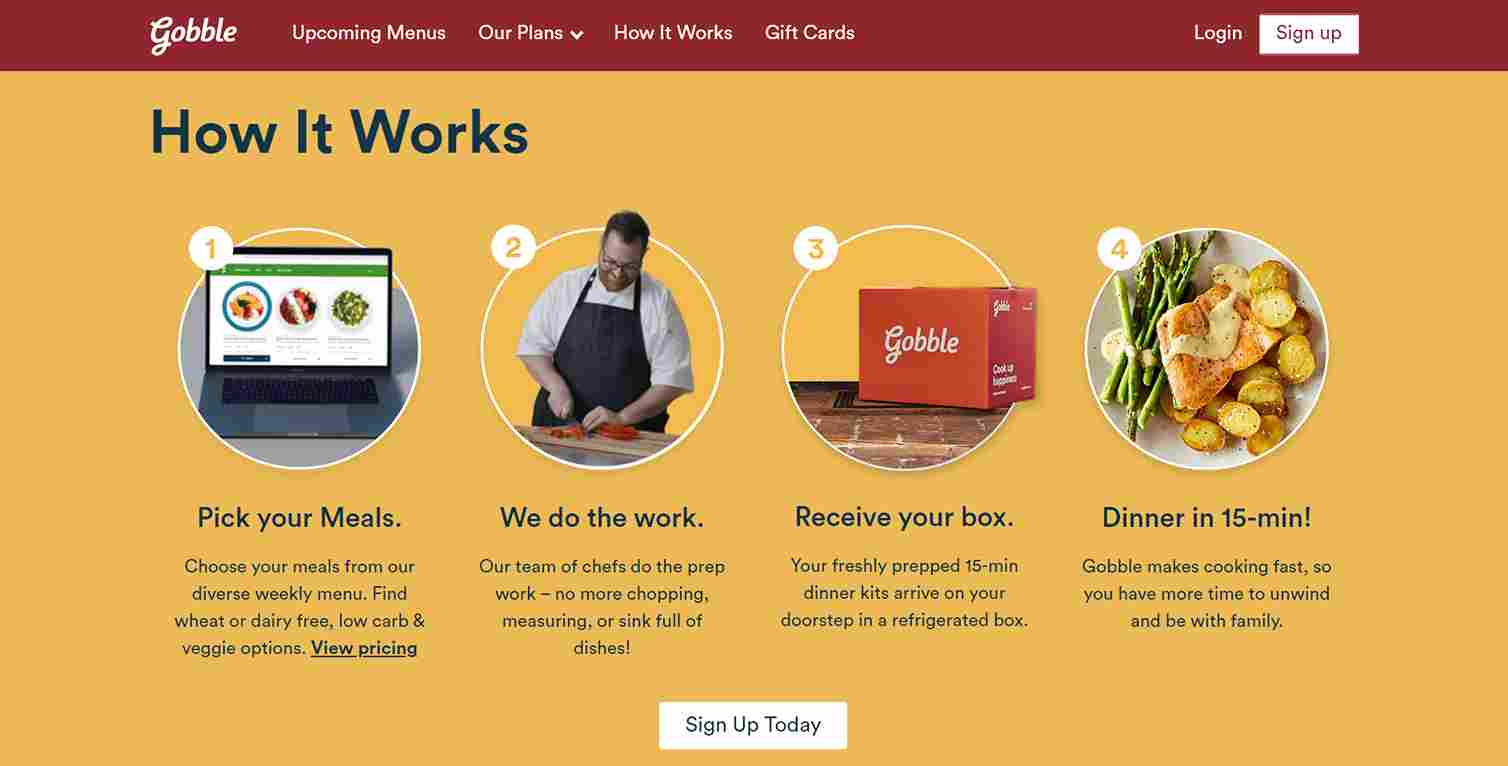Quick Links
Imagine asking a shop assistant for a blue tie and receiving a pair of purple flip-flops instead. You’d definitely feel that they didn’t understand what you were looking for. Consumers experience similar confusion when they search for a specific item and see ads that have nothing to do with their search intent.
Google wants its users to see only valuable, helpful ads that lead to relevant, helpful landing pages. That’s why the company came up with Quality Score, an indicator showing advertisers how they can make their ads more clickable, relevant, and profitable.
And Google rewards advertisers that get QS right with lower CPCs, higher placements, and more. So obviously, you want to improve your Google Ads Quality Score and target your potential customers with laser precision.
And this article will give you step-by-step instructions on how to achieve that, including real-life examples. We’ll look at some well-performing ads and effective landing pages and discuss how to get a good Quality Score.
What is Quality Score?
Quality Score is a metric designed to reflect the quality and relevance of your ads, keywords, and landing pages to the average user.
You can use it to improve your targeting, create more relevant ads and landing pages, and, as a result, improve your ad rank without increasing your bids.
Quality Score is measured on a scale from 1 to 10 and displayed for each of your keywords. Google uses historical performance data from other advertisers and compares it to your ads’ performance to calculate Quality Score. The score includes three main factors: expected click-through rate, ad relevance, and landing page experience.
Think of Quality Score as a guidepost rather than a performance indicator that has to be pushed as high as possible. In other words, you want to optimize what Quality Score says it measures, but not obsess too much over the metric itself.
What Does Quality Score Mean?
For many keywords, there are hundreds of advertisers competing for the top spots on the results pages. Naturally, Google has to decide whose ads will show up higher, and which will be lower priority.
Simply prioritizing the highest bidder was the first approach, but they canned it after issues with illegitimate advertising and even spam. After all, a big budget doesn’t guarantee high-quality and relevant ads.
That’s why Google developed Quality Score. It’s Google’s way of assessing ads and establishing their clickability and whether they match search intent. It’s in the company’s best interest to incentivize advertisers to improve the quality of their ads so consumers don’t lose trust in their platform.
Plus, if more people click on your ad, Google earns more money from that, so it’s a win-win situation.
Why Is Quality Score So Important?
A high Quality Score doesn’t guarantee that your ad will generate tons of sales, but it does put a certain stamp of approval on your ad and its targeting.
At the same time, a low Quality Score doesn’t mean your campaign failed — it’s just a sign that you need to organize your ads differently, improve your ad copy, or something along those lines.
Quality Score influences Ad Rank, a metric Google uses to determine your ad position and whether your ads will show at all. Ad rank basically multiplies your bid with your quality score (and does the same for all competing advertisers), and the winners get the top spots.
This is how much Quality Score can increase or decrease the impact of your bids:
Understanding Google Ads quality standards will help you outsmart your competitors, even if they have deeper pockets. You can win a higher position and save money by making your campaigns more relevant and useful to your target audience.
If your ads meet your potential customers’ needs and thus make Google happy, your life as an advertiser becomes easier:
- Your actual cost-per-click will be lower than your maximum bid because you’ll only have to pay what’s required to hold your ad position and any potential ad extensions.
- Your ads attract users with an expressed buying intent instead of random people.
- You improve your landing page quality and make it more intuitive, to-the-point, and sales-oriented, which will help you convert traffic from other sources, too.
If you aren’t sure if Google Ads is worth it, keep on reading to understand how you can succeed where others trip up.
How to Improve Your Google Quality Score
There are three main components to Google’s Quality Score. Expected click-through rate (CTR) shows how likely your ad is to get clicked when displayed for that search term. Ad relevance reflects how closely your ad matches the search intent. Landing page experience demonstrates how relevant and useful your landing page is to users who click your ad.
If any of these Quality Score parameters have a status “Below average” or “Average,” they require your attention. Now, let’s talk about how you can positively influence each Google Quality Score metric.
#1. Optimize your ad to improve your expected click-through rate (CTR)
The goal is to make an eye-catching ad that immediately makes the user think, “that’s exactly what I was looking for.” To achieve that, you need to polish your ad copy and work on your keywords as well. Here’s how to do that.
Revise your ad copy and make your ad mirror the intent of your keywords
Make sure it accurately captures your offer and sparks curiosity. Include words related to your keyword. Use active verbs, address the user, and be specific — add important facts, numbers, achievements, or stats to make your business appear more credible, or mention that it’s a limited-time offer to add a sense of urgency. Also, check if your landing page URL is specific to the search query and clearly lets users know where the click will take them.
Prioritize long-tail keywords
Go for more specific, lower-search-volume relevant keywords to attract users who’re already inclined to purchase and know exactly what they want — for example, instead of “running shoes,” try “cushioned running shoes for bad knees.” Test different keyword placements in your copy to find the best-performing formula.
Emphasize your USP
Make it obvious to your target audience why your offer is better than the competition. Try to highlight your unique benefits instead of repeating what every other ad is saying.
Make your CTAs more emotive and attention-grabbing
Add power to your CTAs by replacing weak nouns with active verbs. Instead of “Cooking training,” try “Learn to make 10 French dishes in a week.” Avoid using calls-to-action to describe your offer — that’s what ad copy is for. In your CTAs, you need to speak to your audience directly and show them that they’re one click away from achieving their goal.
Let’s take a look at an ad that checks all the boxes:
In this example, we see how social proof, a strong CTA, a concise description, and a limited-time offer can drastically improve ad quality by making it more credible, relevant, and desirable.
#2. Improve ad relevance by targeting the right keywords (with the right ads)
Buyers don’t think in plain keywords — they’re looking for something specific when they type something into Google. Your ads should get as close to what they’re searching for as possible. The closer you can get, the more likely they are to click on your ad.
Analyze search intent to get a better ad relevance score
Search intent is the industry lingo for “what a Google user is looking for when they search.” A good place to start is to search the keyword yourself and look at the top results, questions, and related searches. You can also use SERP analysis tools to understand what terms and tone of voice high-ranking landing pages use — their SEO tactics can help your PPC strategy.
Don’t forget to use negative keywords
Negative keywords can help you protect your budget and prevent you from targeting the wrong audience. For example, if you’re looking for potential customers, you don’t want to show up for searches for “Toyota dealership jobs.”
Excluding ambiguous search terms can also be helpful if you want to separate your campaigns, meaning, avoid cross-campaign matches.
Organize your ads by splitting them into smaller groups
Don’t squeeze 15–20 keywords into one ad group. It might be easier to set up your campaign that way, but you’ll end up diluting your ads’ impact and lowering their Quality Score.
Instead, group keywords by a single theme, and write unique ad copy that matches the search intent of each keyword.
Avoid broad-match keywords and use either phrase match or exact match when creating your single-theme ad group (STAG).
You need to be highly specific in your ad copy, so don’t target too many search terms at once. Just think of how you create individual product pages on your website. You need an ad that represents each product or potential interest in your product.
#3. Optimize your landing page experience
To ensure a high Quality Score, you need to think about what happens after a user clicks your ad. If they land on your page and don’t see anything resembling your initial offer, they get frustrated and leave. What’s even worse, they also lose faith in your brand, so it’ll be harder for you to land the sale in the future.
Thankfully, you can prevent this by optimizing your landing page for each specific search query and making it more conversion-friendly.
This checklist will help you improve your landing page experience, your QS, and boost your sales:
- Make sure that your landing page fully matches your ad: Link to a dedicated landing page created specifically for that type of keyword instead of sending them to learn more about your company.
- Keep your messaging and CTAs consistent: Avoid confusion by making sure that your ad and your page have exactly the same keywords and CTAs and use the same language.
- Make your page easily scannable and remove distractions: Make the buyer’s journey smoother by removing unnecessary links, buttons, and other elements to help them focus on your key offer.
- Use heatmaps and other analytics tools to spot the problems: See what makes your visitors rage-click or piques their interest and how their eyes travel across your page.
- Improve your landing page load time: Compress your images, use the WebP image format, trim unnecessary CSS and JavaScript, reduce the size of third-party scripts, and switch to a popular CDN to take advantage of faster load times abroad.
- Show how you secure customer data: From providing safe online payments to implementing an honest privacy policy, show your website visitors that you want to keep them safe.
- Check if your landing page looks great on mobile devices: Run a mobile-friendly test and find out how to enable your website visitors to shop spontaneously and on the go.
- Demonstrate your legitimacy through social proof: Overcome customer hesitation and show how many users have already purchased from you and what they think about your brand.
- Run a UX audit: Find where your visitors stumble or get lost and how to make your page more digestible and accessible.
Here’s an example of a landing page that has it all. Let’s start with the ad itself (it showed up for the keyword “meal kit delivery service):
The ad is informative and relevant to what we were looking for. It features a special offer and lists Gobble’s unique options, such as meal customization. The USP makes the ad stand out and targets consumers who don’t want to spend hours in the kitchen.
Once the user clicks the ad, they’re sent to an intuitive landing page supporting the ad’s promise. The user can access all the necessary information and make their first order without even having to scroll down.
This landing page respects customers’ time and attention — even the social proof is placed above the fold. The rest of the page is just as intuitive, concise, and loaded with appealing and original content.
The page is visually clean and distraction-free, and it presents the offer without overwhelming the reader with unnecessary information. The CTAs are also consistent throughout the page — another detail that contributes to the frictionless landing page user experience.
Getting a High Quality Score Can Be Tricky — We’re Here to Help
If you want to stop worrying about your Quality Score and conversion rates and focus on what you’re good at, try our PPC management services. We’ll help you generate consistent leads and sales and beat the competition. Here’s how it works.
Firstly, we create a customized strategy for your business. Then, we design your campaigns and pre-optimize them to ensure high-quality traffic from day one. The improvements don’t stop after the launch — we regularly optimize campaign performance as we go to make sure that you won’t spend money on low-quality keywords. Also, we deliver weekly reports to keep you in the know.
Book a call to start working with your personal PPC expert and supercharge your ad campaigns. Also, check out our case studies to see how we’ve already helped other businesses get more leads and sales, while simultaneously reducing advertising costs.



